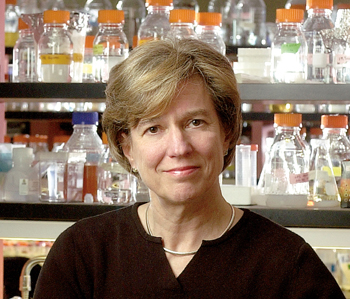
The Puppetmasters of Academia (or What the NY Times Left Out)
“Reading the emails make(s) me want to throw up” tweeted the Food Babe after reading a lengthy series of them posted online by the NY Times on Sept 5th. The emails in question result from a Freedom of Information Act (FOIA) request and are posted in the side bars of a front-page article by Times reporter Eric Lipton (“Food Industry Enlisted Academics in G.M.O. Lobbying War, Emails Show”). The article is highly disturbing, but, as the Food Babe implied, the Times buried the real story. The real scoop was not the perfidy and deceit of a handful of individual professors. Buried in the emails is proof positive of active collusion between the agribusiness and chemical industries, numerous and often prominent academics, PR companies, and key administrators of land grant universities for the purpose of promoting GMOs and pesticides. In particular, nowhere does the Times note that one of the chief colluders was none other than the President of the American Association for the Advancement of Science (AAAS).
September 8, 2015 | Source: Independent Science News | by Jonathan Latham, PhD
“Reading the emails make(s) me want to throw up” tweeted the Food Babe after reading a lengthy series of them posted online by the NY Times on Sept 5th. The emails in question result from a Freedom of Information Act (FOIA) request and are posted in the side bars of a front-page article by Times reporter Eric Lipton (“Food Industry Enlisted Academics in G.M.O. Lobbying War, Emails Show”). The article is highly disturbing, but, as the Food Babe implied, the Times buried the real story. The real scoop was not the perfidy and deceit of a handful of individual professors. Buried in the emails is proof positive of active collusion between the agribusiness and chemical industries, numerous and often prominent academics, PR companies, and key administrators of land grant universities for the purpose of promoting GMOs and pesticides. In particular, nowhere does the Times note that one of the chief colluders was none other than the President of the American Association for the Advancement of Science (AAAS).
All this is omitted entirely, or buried in hard-to-notice side bars, which are anyway unavailable to print readers. So, here is the article Eric Lipton should have written.
First, The Lipton Story
The Lipton article seems, at first sight, to be impressive reporting. Lipton describes how Kevin Folta, Chair of the Dept. of Horticulture at the University of Florida secretly took expenses and $25,000 of unrestricted money from Monsanto to promote GMO crops. On behalf of the biotech industry, or via the PR firm Ketchum, Folta wrote on websites and attended public events, trainings, lobbying efforts and special missions.
Parts of this were already known, but Lipton digs up further damning evidence and quotes from Folta. They include an email to Monsanto that solidly contradicts Folta’s previous denials of a relationship with Monsanto and the biotech industry: “I am grateful for this opportunity and promise a solid return on the investment,” Folta wrote after receiving the $25,000 check, thereby showing both a clear understanding of his role and the purpose of the money. The article goes on to similarly expose Bruce Chassy (Prof Emeritus, University of Illinois) and David Shaw (Mississippi State University). It also discussses, presumably for “balance”, agronomist and GMO critic Charles Benbrook, then at Washington State University, who unlike the others openly acknowledged his funding.
What Lipton Missed
But readers of the emails can find facts that are much more damaging to perceptions of academic independence than that contained in the main article. For one thing, the money Folta received is insignificant besides the tens of millions his university was taking from Syngenta (>$10million), Monsanto(>$1million), Pioneer (>$10million), and BASF (>$1million). Money that it’s hard to believe did not have a role in protecting Kevin Folta as he roamed zealously (and often offensively) over the internet, via his twitter account, blog, podcast, and OpEds, squelching dissent and ridiculing GMO critics wherever he went.
Also missing from the main Times article is a sense of the extensive and intricate networking of a small army of academics furthering the interests of Monsanto and other parts of the chemical, agribusiness and biotech industries. Folta rarely acted alone. His networks are filled with economists, molecular biologists, plant pathologists, development specialists, and agronomists, many of them much more celebrated than Kevin Folta, but all of them in a knowing loop with industry and the PR firms. Their job was acknowledged openly in emails (“We are all bad-ass shills for the truth. It’s a pleasure shilling with you.” Or, as Folta himself put it: “I’m glad to sign on to whatever you like, or write whatever you like.”). More generally, the group’s role was to initiate academic publications and other articles and to firefight legislative, media and scientific threats to the GMO and pesticide industries, all the while keeping their industry links hidden.
